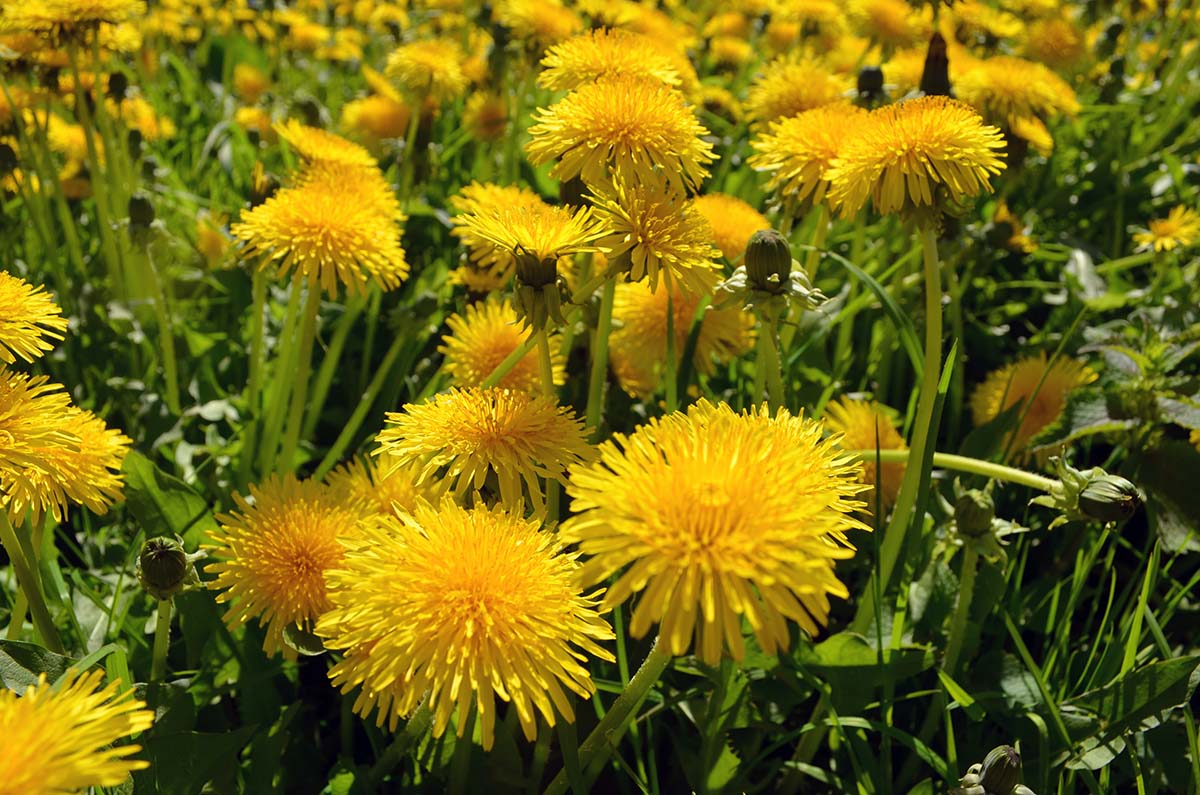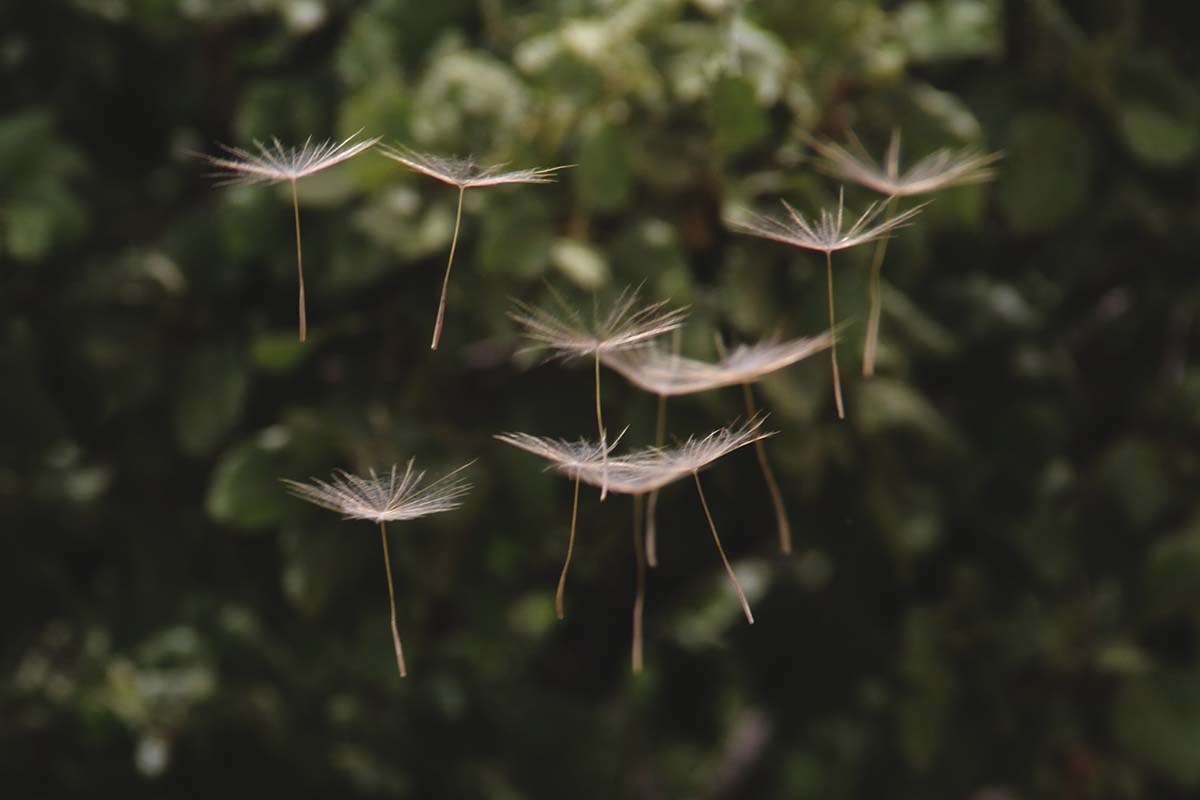There’s a lot to appreciate about the common dandelion, and one of the best things about it is that a lot of people hate them.
The primary reason people hate them is that they’re so insistent. They’re survivors of chemical attacks and attempts to uproot, hanging on tight with their thick roots and just breaking off at the top. They’re quick to reproduce, too, spreading seed effortlessly on the breeze. Gardening writer Anna Pavord calls dandelions “bullies. They simply had to go.” If you have a garden or lawn almost anywhere on the planet where humans are common, you could be one gust of wind from an invasion in your otherwise green lawn or cultivated flower bed.
I can imagine it must be frustrating for someone who wants to keep a neat, green garden free of weeds, and I’m inclined to argue that dandelions are evil because that attitude benefits us who like picking them. Normally I worry about collecting flowers because they are loved as they are. If a plant is on public land, I have to look up the rules of that type of land. It’s hard to even identify what agency owns public land sometimes, when there are no signs. If the plant is in someone’s yard, you can’t just take it.
This isn’t so much of a problem with plants identified as invasive weeds. When I spent an hour one morning picking dandelions on the strip of land that might have been part of a neighbor’s yard, and the grass that probably belonged to the apartment building owner, I wasn’t afraid of upsetting anyone. These are weeds, aren’t they? Maybe they’d thank me for plucking up a few of the bright yellow heads.
I collected a few handfuls from around my own neighborhood, more hyper-local than anything I could possibly buy. I washed them, pulled out the petals and looked up a cookie recipe. Despite knowing very little about cooking and baking, they turned out great, the little yellow flecks of edible petals decorating an otherwise simple dessert.
I wondered, if people in the neighborhood knew that the dandelions near them had so many potential uses, maybe there would be more competition for them.

What is a Dandelion?
The word dandelion, meaning “tooth of lion” because of the shape of their leaves, actually refers to more than 250 species in the Taraxacum genus. The most common one that you might have in your garden is aptly named the “common dandelion,” or Taraxacum officinale. One of the many other species, Taraxacum californicum, is native and endemic only to the San Bernardino mountains of California.
Dandelions are usually yellow and have a “composite” head, made up of a bunch of flowers, as opposed to a “disk” head, making them a favorite for butterflies who can’t fit in more closed-face flowers. They have an exceedingly long history of traveling around the world with and for humans.

Foraging
After watching some videos from Alexis Nicole, a social media celebrity who teaches people to appreciate and eat the plants growing in their neighborhood, I decided to try foraging. After much effort and a failure to get anything good from cattails, I turned to dandelions. I already knew how to identify this weed, for the most part, considering how common they are around humans. And I knew I could find them all over the neighborhood, from parks to yards.
“Dandelions are more like beginner-level foraging,” says Jesse E.D. Miller, who researches plants and landscape ecology at UC Davis. That’s pretty appealing to me, as calling myself a beginner-level forager is a stretch.
“When it comes to foraging, dandelions are one of the healthiest, healthiest, healthiest things you could collect,” says Tracy Thatcher, a garden and nature educator, and San Francisco Botanical Garden docent.
I met Thatcher at Mitchell Canyon, one of her spots at which she regularly trail runs. It’s hard to imagine she gets any running done at all for two reasons. One, because she frequently stops to point out facts and uses of all sorts of plants, ever present and aware of what’s happening with the plants on the trail. Two, because she once broke her back and was bedridden for seven years. Now, she runs on Bay Area trails multiple times a week and teaches plant-based cooking.
The health benefits of foraging dandelions are consistent across many different cultures. Various Native American groups considered dandelion to be, for instance, an all-over wellness tonic. The Cafe Ohlone, which plans to reopen in Berkeley early next year, offers dandelion soup on the menu.
Early Europeans and practitioners of Traditional Chinese Medicine also used dandelions to treat a wide variety of ailments. Ultimately, Europeans brought the common dandelion to the United States as a salad green. Thatcher juices the greens, sautés them, and uses them in salads. You can use the yellow heads in baking, wine, and tempura snacks.
Many dandelion benefits have been confirmed in a lab as well. A 2016 Study published in the journal Romanian Biotechnological Letters found that dandelions are filled with antioxidants, vitamin C, chlorophyll and carotenoids. Scientists have also found that Dandelion Root Extract (DRE) kills 95 percent of colorectal cancer cells in a petri dish, and 90 percent in mice.
There are just a few dangers to watch out for. For instance, any plant that lives so close to humans can be exposed to pesticides and herbicides, so it’s important to wash your haul. Also, while diuretics can be useful in many circumstances, this quality has also gained the flower the nickname “wet-the-beds.”
As a Part of Nature
Dandelion is “a really useful plant to have around both from an ecological perspective but also because we can use the plant,” says Miller, the UC Davis botanist.
Miller categorizes some invasive plants, such as dandelions, as “exotic but benign.” They can, like any plant, crowd out whatever other plants live in their environment, and for that reason, Thatcher, a fellow dandelion lover, will cut off the seed heads before they overpopulate her yard. Miller says that dandelions aren’t usually much of a problem to native plants because they prefer the type of soil that most other plants hate anyway. Still, the flower can be obnoxious in its coverage of some domestic plants, competing for sun and soil in fields of crops like alfalfa.
Humans tend to compact soil, which makes it hard for many plants to grow. As the plants with more sensitive roots leave, dandelions take root, with their strong, deep taproots penetrating the earth. “You could think of it almost as helping to repair compacted soils very slowly,” says Miller. They also help fertilize your yard by fixing nitrogen levels.
Pollinators drop pollen into the flowers, which goes down into the ovary of the plant, fertilizing the seeds. When that doesn’t happen, the plant can simply fertilize itself. Then, the fuzzy inside of the flower emerges, pushing away the yellow portions, and forming into a fuzzy parachute or papus. These papuses form a “blowball,” which children pluck and wish on, blowing the seeds away to settle down in someone else’s yard.
“You can’t really blame a plant that’s good at dispersing long distances and finding these opportunities,” Miller says.

A Time and A Place
While Thatcher and Miller both like these flowers as well, what I noticed is that their affection was not unconditional or absolute. Both admit that too many dandelions can be a problem. While they are overall pretty healthy for humans, any food or medicine can be misused.
The dictionary defines weeds as “a wild plant growing where it is not wanted and in competition with cultivated plants.” On the one hand, you can de-list a plant from the “weed” category by simply choosing to want it.
On the other hand, maybe “want” and “don’t want” are the wrong questions. A gardener might want dandelions to fix nitrogen levels, but not to grow out of control and crowd out other flowers. A chef might want the young leaves for salad, but not the bitter ones if it doesn’t fit the dish. And a person might want the diuretic properties of the plant — or it might be inconvenient.
Instead of trying to appreciate dandelions as a whole, perhaps we should ask, are they growing — or being consumed — at the right place and the right time for your needs?
Personally, as someone with no lawn to worry over and a penchant for free food, I love them unconditionally. But maybe that will change with time.